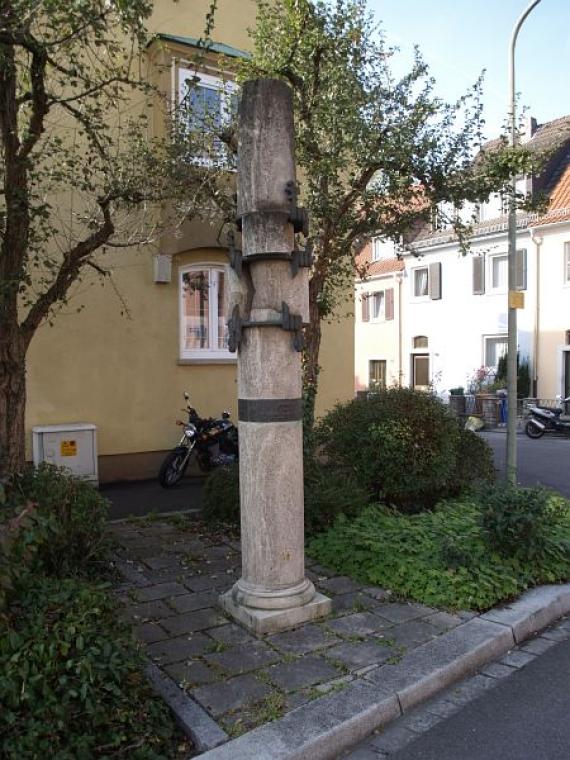Dürrenberg 4
97084 Würzburg
Germany
On the prayer rooms/synagogues from the 16th to the second half of the 17th century there is hardly any information available. A first larger synagogue was built on the Dürrenberg between 1693 and 1698. After the middle of the 18th century, it became increasingly dilapidated and was too small for the growing number of congregation members.
In 1780, a new synagogue was built. The synagogue, built in Baroque style, was the largest Franconian synagogue of its time, an outstanding building in Heidingsfeld at that time. The building files, which were in the Würzburg State Archives, were burned during the bombing of Würzburg in March 1945. However, there are individual reports from Jewish periodicals with descriptions of the Heidingsfeld synagogue.
During the November pogrom of 1938, the synagogue building was set on fire and completely destroyed. The wife of the synagogue servant had been ordered to open the synagogue on the night of November 10. During the fire of the synagogue, all valuable remaining ritual items were destroyed, including gold and silver embroidered Torah shrine curtains from the beginning of the 18th century, copper chandeliers from the 17th century, two finely crafted Shabbat candlesticks (hanging on either side of the Holy Ark on wrought-iron arms decorated with foliage and ribbon work), numerous beautifully embroidered Torah coats, silver Torah crowns, prayer books, etc.
The perimeter walls of the destroyed synagogue were still standing up to eaves height until after the end of the war. The next to it standing plastered half-timbered house of the Jewish school as well as the baroque enclosure wall of the whole area remained likewise until after 1945 (note Thomas Wüstefeld from 2.9.2015).
In 1956, the synagogue property, respectively the whole neighborhood was newly built (two residential buildings). Instead of the enclosed plot with green space and individual buildings, a closed perimeter block development was created, which negates any memory of the pre-war development. In the immediate vicinity (at the building Dürrenberg 1), a memorial column was erected by the city of Würzburg in December 1986. The shaft symbolizes the history of the people of Israel; it is violently interrupted several times. Stylized barbed wire and tears made of bronze stand for the sorrowful epochs in the history also of the Jews of Heidingsfeld. The six parts of the column symbolize the six million Jews murdered during the Nazi era. The inscriptions read: "Godless people destroyed the synagogue standing here on November 9, 1938", "In memory of the suffering of the Jewish community", in Hebrew "In memory of the holy community in Heidingsfeld".
The wedding stone (Chuppa stone) of the Heidingsfeld synagogue was preserved and was integrated into the outer wall of the Würzburg synagogue (Valentin-Becker-Str. 11), which was inaugurated in 1970, and is now located in the new "Jewish Museum Würzburg" at the synagogue Valentin-Becker-Straße 11.

"Godless people destroyed the synagogue standing here on Nov. 9, 1938"/ "In memory of the suffering of the Jewish community" / in Hebrew: "In memory of the Holy Community of Heidingsfeld".